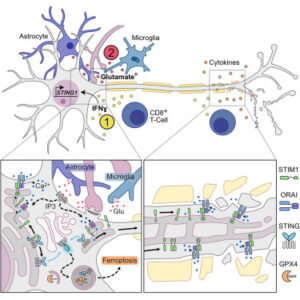Abstract: Cerebral ischemia is a major health risk that requires preventive approaches in addition to drug therapy. Physical exercise enhances neurogenesis and synaptogenesis, and has been widely used for functional rehabilitation after stroke. In this study, we determined whether exercise training before disease onset can alleviate the severity of cerebral ischemia. We also examined the role of exercise-induced circulating factors in these effects. Adult mice were subjected to 14 days of treadmill exercise training before surgery for middle cerebral artery occlusion. We found that this exercise pre-conditioning strategy effectively attenuated brain infarct area, inhibited gliogenesis, protected synaptic proteins, and improved novel object and spatial memory function. Further analysis showed that circulating adiponectin plays a critical role in these preventive effects of exercise. Agonist activation of adiponectin receptors by AdipoRon mimicked the effects of exercise, while inhibiting receptor activation abolished the exercise effects. In summary, our results suggest a crucial role of circulating adiponectin in the effects of exercise pre-conditioning in protecting against cerebral ischemia and supporting the health benefits of exercise.
Zheng M, Zhang B, Yau SSY, So KF, Zhang L, Ou H. Exercise preconditioning alleviates ischemia-induced memory deficits by increasing circulating adiponectin. Neural Regen Res. 2025 May 1;20(5):1445-1454. doi: 10.4103/NRR.NRR-D-23-01101. Epub 2024 Mar 1. PMID: 39075911..

